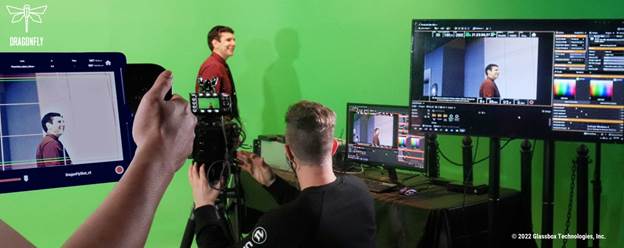Glassbox Technologies upgrades its virtual camera solution.

Glassbox Technologies is taking the sting out of the complex process of virtual productions, releasing a major update to its cross-platform virtual camera software, Dragonfly, with new camera simulation functionality and features that further streamline the virtual production workflow process.
DragonFly 3.0 includes new physical camera and lens simulations, real-time compositing, editing after takes, full support for Epic’s Unreal Engine, and more.
“Virtual production can be a very resource-intensive, technical process, which was one of the biggest issues preventing its widespread adoption,” said Norman Wang, CEO of Glassbox Technologies. “Our aim with DragonFly 3.0 was to simplify as many time-consuming tasks as possible and ensure a more creative true-to-life camera experience that makes it easier for both creative and technology teams to get to the final shot fast.”
The new camera and lens simulations in DragonFly 3.0 resemble real-world scenarios,
accurately reproducing physical cameras and lenses virtually, from lens distortion to anamorphic lenses, including exact ISO, shutter speed, frame rate, ND filter strength, and aperture. A dedicated rendering pipeline fully integrates with Unreal Engine’s standard viewport rendering.
With the addition of Simulcam capabilities for real-time compositing, DragonFly allows for seamless on-set visualization, overlaying Unreal Engine scenes with live-action media plates so directors can preview CG and live performances immediately. There’s also native support for the new HTC VIVE Mars CamTrack.
DragonFly can be purchased as an annual subscription from the Glassbox website. Perpetual and floating license options are available as well, in addition to a free 30-day trial of DragonFly.





